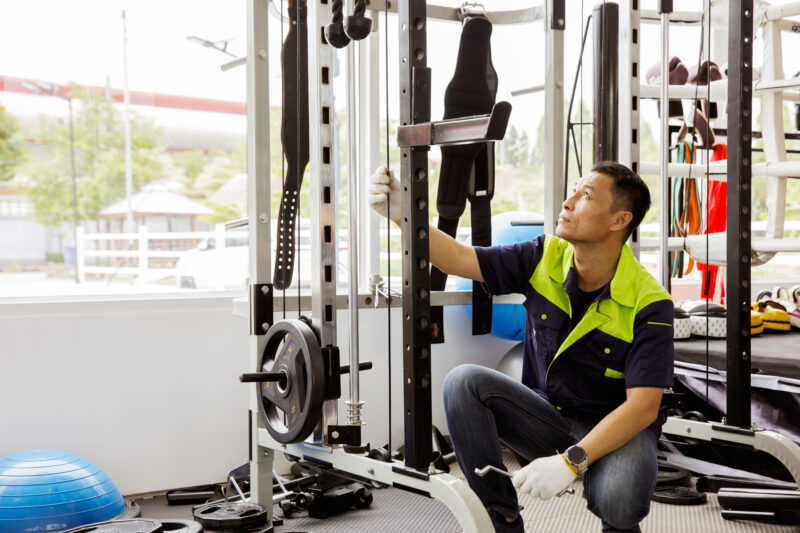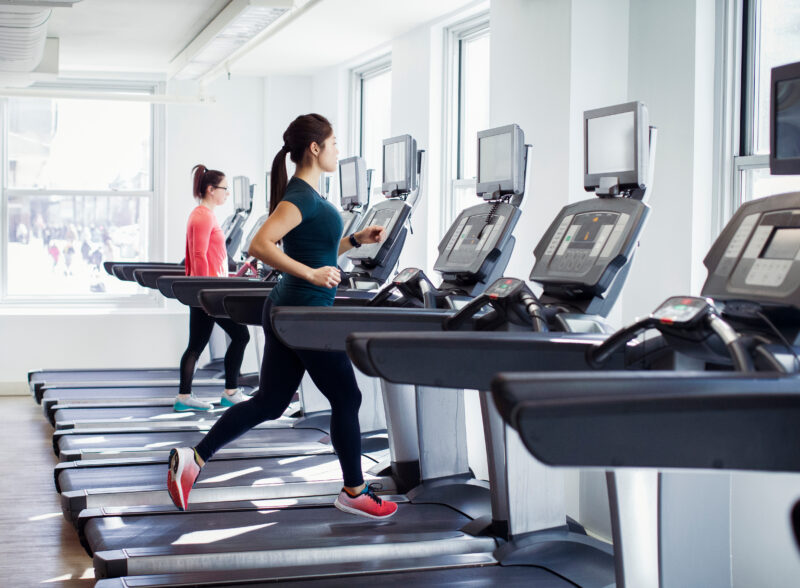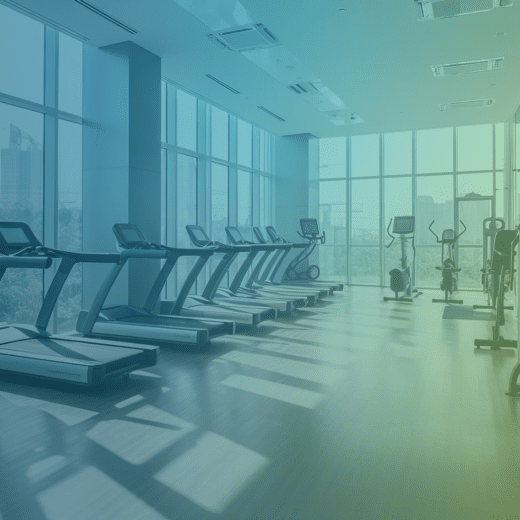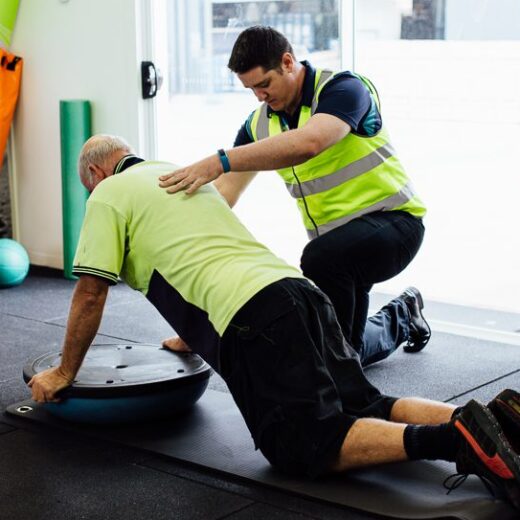
How to Prevent WorkCover Claims by Addressing Musculoskeletal Injury Risk Early
Read more
Many companies are embracing onsite workplace gyms to boost employee health and morale. It’s easy to see why – a convenient office gym can improve fitness, reduce sick days, and make employees feel valued. In fact, improved workplace health is linked to reduced absenteeism, higher productivity, and better team engagement. A workplace gym can also be a recruitment and retention drawcard, signalling that you care about staff wellbeing.
However, along with these benefits come important safety and legal responsibilities. Before you roll out the yoga mats and weight machines, it’s crucial to understand the potential risks and compliance requirements. In a conversational yet professional tone, let’s explore how to balance the positives of an office gym with the precautions needed to keep everyone safe and your organization out of legal trouble.
On the upside, a workplace gym can be a win-win for both employees and the company. Some key benefits include:
Easy access to exercise helps staff improve their fitness and manage stress. Healthier employees often means fewer chronic health issues and less time off work.
Group workouts or even just the option to exercise at work can boost team spirit and job satisfaction. Employees appreciate when their company supports their well-being, leading to improved morale and loyalty.
Exercise is known to sharpen focus and energy. A quick gym session can refresh employees, potentially increasing productivity and creativity when they return to their desks.
Offering wellness perks like a gym helps position your company as an “employer of choice.” It signals a positive culture. Current staff are more likely to stay, and candidates find it appealing that you invest in employee wellness. It’s a growing trend to see corporate wellbeing programs (from onsite yoga to subsidized gym memberships), and these programs are indeed beneficial
In short, a well-implemented office gym can contribute to a healthier, happier workforce. But – and this is a big “but” – to enjoy these benefits, the gym must be introduced thoughtfully, with safety in mind. As HR or Safety professionals, you’ll need to ensure the gym doesn’t become a source of injuries, liabilities, or regulatory violations. Let’s talk about what can go wrong and how to prevent it.

When you set up a workplace gym in Australia or New Zealand, it’s not just a “perk” – it becomes part of the work environment that you are legally responsible for. Under Australian Work Health and Safety (WHS) legislation, employers (or PCBUs – Persons Conducting a Business or Undertaking) have a duty to ensure the health and safety of workers and others so far as is reasonably practicable. This duty explicitly extends to anyone who could be affected by the business’s operations, not just employees. In other words, if you provide a gym on your premises, you must take steps to keep it safe for employees and any visitors or contractors who might use it.
New Zealand’s Health and Safety at Work Act 2015 sets a similar expectation. Employers (PCBUs) must provide and maintain a work environment (which includes facilities like gyms) that is without risks to health and safety, so far as reasonably practicable. In both countries, that means you cannot treat the gym as a free-for-all zone; it falls under the same safety framework as the rest of your workplace.
You’ll need to incorporate the gym into your safety management system. This includes conducting risk assessments, implementing control measures, and complying with any relevant codes or guidelines (for example, equipment standards). It also means providing appropriate training or instruction to workers about the gym, just as you would for any work task or tool.

Remember, having a proper WHS plan isn’t optional. Failing to meet your WHS duties in a gym can lead to regulatory action, just as in any other part of the business. For instance, all fitness facilities (including a company gym) have a duty of care to ensure the premises and equipment are safe to use. If an employer neglects this duty, they could face investigations, fines, or prosecutions under WHS law. In one case, a non-profit organization in Queensland was prosecuted under the WHS Act (Category 2 offence) after a tragic incident in its gym – a sober reminder that regulators take gym safety seriously.
One commonly overlooked issue with workplace gyms is the “lone worker” or unsupervised use risk. Unlike commercial gyms, an office gym may not always have a trainer or supervisor on duty. Employees might use it early in the morning, late in the evening, or on weekends when few people are around. This scenario raises several safety concerns:
If someone injures themselves while lifting weights or using a treadmill incorrectly and no one else is present, they might not receive immediate assistance. For example, consider the danger of a heavy barbell mishap – there have been cases where individuals got pinned under weight equipment with nobody around to help. In one tragic Australian incident, a teenager was bench-pressing alone in a gym; the bar fell and trapped him, and he was only discovered about 20 minutes later owhsp.qld.gov.au. Quick rescue can make a huge difference in such situations, and a lone user might not have that lifeline.
Even if an exercise is being done correctly, health emergencies like heart attacks or fainting can occur. Without a buddy or staff member to call for help, a medical emergency can turn deadly. A person collapsing in an empty gym may lie there too long before help arrives. This is especially a concern for those with underlying health conditions exercising alone.
In the event of a fire, electrical accident, or other emergency in the gym, a lone user might not be able to quickly raise the alarm or might be unaware of how to respond. The absence of staff could delay evacuation or first aid.
An unattended, always-open gym could attract security risks. If your company allows 24-hour access, an unsupervised facility might become a target for vandalism or unauthorized entry, potentially endangering the lone exerciser (think of someone walking into an isolated gym late at night).

To address these concerns, you might implement rules or technologies. Some companies only allow gym access during certain hours when others are likely around, or require a “two-person rule” (no using the gym completely alone, especially for heavy weightlifting). Others install emergency systems: panic buttons, intercoms to security, or wearable alarms that an employee can trigger. Surveillance cameras can help monitor the area (with respect to privacy, of course) and detect if someone is in distress. It’s also wise to post clear instructions in the gym on what to do in case of an emergency and ensure first aid equipment (like a stocked first aid kit and possibly an AED – Automated External Defibrillator) is available. If your building has after-hours security staff, make sure they periodically check the gym if someone is using it solo.
The key is to not leave employees’ safety to chance. If you’re giving people the freedom to work out on their own schedule, pair that freedom with safeguards and educate users on the buddy system and emergency procedures.
Providing a gym for employees can blur the lines between work and leisure, but from a liability perspective, you may still be on the hook if something goes wrong. Apart from statutory WHS penalties, companies must consider common law risk – essentially, the risk of being found negligent if you don’t take reasonable care for people’s safety. Even if workers’ compensation schemes cover on-the-job injuries, serious incidents can lead to extensive claims or lawsuits, especially if negligence is alleged.

Courts have shown that employers can indeed be held responsible for accidents in workplace gyms or fitness activities linked to work. For example, there have been Australian cases where gyms (or their parent organizations) were held liable for injuries to users due to inadequate safety measures. In one notable Queensland case, as mentioned, an organization was fined $300,000 after a 15-year-old gym user died from an accident with a weights machine. The investigation found failures in enforcing safety policies, demonstrating how a lack of proper oversight can result in a devastating outcome and hefty penalties. Furthermore, even activities that occur outside the main workplace can fall under an employer’s duty of care if they are seen as encouraged by the employer.
A striking example is a case where a senior employee died of a heart attack while using a hotel gym during a business trip. The South Australian Employment Tribunal ruled that the employee’s family was eligible for workers’ compensation, essentially because the employer had “impliedly encouraged” the employee to use that gym by providing it as part of his work travel accommodation. The judge noted that by choosing a hotel with a gym, the company induced the worker to engage in that activity – making the workout effectively work-related in terms of liability. This precedent alarmed some employers, as it suggests that if you offer fitness perks (onsite gyms, subsidized memberships, wellness programs, etc.), an injury during those activities might be considered arising in the course of employment.
You might wonder if you can have employees sign a liability waiver for using the office gym, similar to commercial gym membership agreements. While a waiver or disclaimer could have some legal effect, it absolutely does not override workplace safety laws or an employer’s fundamental duty of care. You cannot contract out of your obligations to provide a safe environment. In the case of the Queensland gym fatality, the gym did have a signed waiver from the user and a policy requiring minors to be supervised – yet the court found the organization at fault for failing to enforce safety, and proceeded with prosecution despite the waiver. In other words, a waiver is not a get-out-of-jail-free card if negligence is present. As an employer, you will be expected to do whatever is reasonably practicable to prevent harm, regardless of what papers are signed.
From a liability standpoint, treat your workplace gym like part of the workplace (because it is!). If an employee or even a visitor gets hurt due to something you could have addressed – say, a faulty machine you neglected to fix, or lack of basic first aid arrangements – the company could face legal action. This might come as regulatory fines, workers’ comp claims, or even civil negligence claims in extreme cases. Protecting users protects your people first and foremost, but it also protects the organization’s interests.

Before you buy the equipment or open the gym doors, perform a thorough risk assessment of the proposed gym space and operations. This is a critical step to identify what could go wrong and how to prevent it. In fact, it’s not just good practice – it’s a legal requirement. Employers are legally required to carry out a risk assessment for the gym to pinpoint hazards and address them. Treat this like you would a safety audit for any other work process.
By doing a comprehensive risk assessment, you’ll likely catch many of the issues we’re discussing (legislation compliance, lone worker scenarios, etc.) as part of that process. It forces you to think through “What if someone gets hurt doing X? How do we stop or respond to that?” and come up with a concrete plan.
After identifying risks, the next step is implementing practical risk mitigation measures. Here are some strategies and best practices to ensure your company gym remains a safe and positive perk:
Workplace gyms can be a fantastic addition to an organization’s wellness program. They show a commitment to employee health, can improve morale, and offer convenient access to fitness. As we’ve discussed, the key is balancing the excitement of a new gym with a clear-eyed approach to risk management. HR and Safety professionals are instrumental in finding that balance – championing the positive aspects while also playing devil’s advocate about the “what ifs” and putting proper controls in place.
The message to take home is “Plan it out, don’t wing it.” Ensure compliance with WHS laws, do your risk assessments, and invest in safety measures just as you invest in the equipment. With the right precautions, you can avoid the common pitfalls and make your workplace gym a safe, successful benefit rather than a liability. As one safety expert put it, you hope an employee’s workout never becomes a work-related injury – but hope is not a strategy, preparation is.
This is where engaging experts can make a big difference. Employ Health can guide you through the entire process – from initial risk assessments and facility planning to staff training and ongoing safety management. We have extensive experience in workplace health and safety, and we understand the unique challenges of setting up corporate wellness facilities.
Our team can help you navigate Australian and New Zealand legal requirements, implement effective risk mitigation processes, and develop a gym policy that suits your organization’s needs. The goal is to ensure you and your employees can enjoy all the benefits of an onsite gym with peace of mind.
If you’re considering a workplace gym (or looking to improve the safety of an existing one), reach out to Employ Health. We’re here to help you create a fit, healthy workplace that’s also compliant and safe.
With the right guidance, you can flex those corporate wellness muscles confidently – knowing that you’ve got the risks under control and your people’s well-being at the forefront.

Read more

On the 24th and 25th of October, the EmployHealth tribe from across Australia and New Zealand came together at Surfing Australia in northern NSW...
Read more
A study from an Australian poultry processing plant found that organisational culture — especially safety climate and disability management practices — had a major...
Read more
A 19-year Swedish study of 200,000+ construction workers has confirmed strong links between repetitive manual work and the need for carpal tunnel surgery. Tasks...
Read more
At Employ Health, our values aren’t slogans on a wall — they’re the standards we hold ourselves to every day. And one of our...
Read more
Workplace gyms can boost employee health, morale, and productivity — but they also come with safety and compliance responsibilities. Understanding how to balance wellbeing...
Read more
Read more

In honor of R U OK?Day, Employ Health CEO Matthew Stewart had the privilege of sitting down with Tim Franklin at a special event...
Read more
At Employ Health, we are passionate about building the future of the workplace. That’s why we are proud to be contributing to the undergraduate...
Read more
The western world is seeing a rise of the ‘Aging population’. Young people are having less kids, people are living longer, and many are...
Read more
–by Matthew Stewart
Read more
Give your team the reset they need with onsite wellness screening The middle of the year is the perfect time to check in, not just...
Read moreCan’t find what you’re after?
View all articles